It's half way through winter and it's that time of the year when migratory birds take over our farms, water bodies and lakes. When the world is set to observe another 'day for migratory birds' on January 5, let us take a good look at the migratory birds and birding community down in the kole wetlands of Kerala.
Situated around one to two meters below sea level, kole wetlands of Thrissur contribute to about 40 percent of the paddy cultivation in the state. These low lands will be waterlogged for seven to eight months a year, after which they are 'dewatered' and cultivated in. This seasonal cultivation paves fertile grounds to terrestrial, areal and aquatic animal migrations. “Dewatering is the time of bird migrations,” says Manoj Karingamadathil, a kole birder. “Half a year under the water, the lands develop a huge aquatic ecosystem so that the birds get a range of preys like fishes, oysters and crabs during dewatering.”
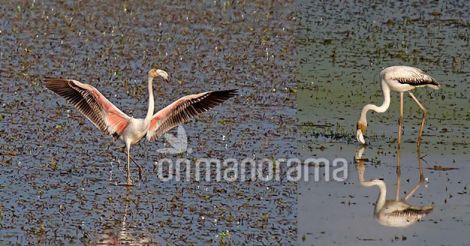 Greater Flamingo at kole wetlands, Thrissur. Photo: Sreedev Puthur
Greater Flamingo at kole wetlands, Thrissur. Photo: Sreedev PuthurThousands of birds from across the world come down here for feeding, breeding and resting during their migration. As much as 250 various bird species have been spotted from the kole wetlands so far, among which around 90 are seasonal visitors. Thrissur kole wetlands is a site preserved under the provisions of Ramsar international convention, a treaty signed in 1971 for the conservation and sustainable use of wetlands.
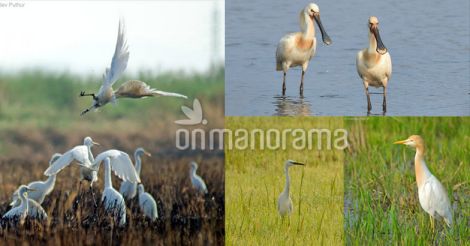 Egrets, Eurasian Spoonbills and Cattle egret. Photo: Sreedev Puthur
Egrets, Eurasian Spoonbills and Cattle egret. Photo: Sreedev Puthur“Northern pintale, northern shovelor, common teal etc are some foreign duck species seen commonly in the kole lands,” says Chithrabhanu Pakaravoor, a passionate bird watcher operating in the kole lands. They come from cold regions like Siberia. Apart from them, local migrant duck species like lesser whistling duck, Indian spotbilled duck, partial migrants like great egret, medium egret and little egret, verders like common sand piper, wood sand piper, green sandpiper and marsh sandpiper, plovers like little ring plover,common ring plover, green shank, red shank and spotted red shank, and around four varieties of warblers are commonly seen in the kole wetlands,” he says.
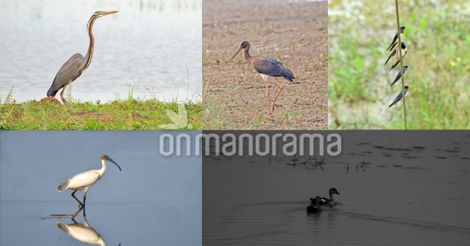 Purple Heron, Black Stork, Swallow barns, Black headed Ibis, Spot billed duck. Photo: Sreedev Puthur
Purple Heron, Black Stork, Swallow barns, Black headed Ibis, Spot billed duck. Photo: Sreedev Puthur
Suitable climatic conditions, splendid food availability and favorable water bodies make kole lands a reliable hub for migratory birds. Rarely spotted birds like greater flamingos, grey headed lapwings and pelicans are also seasonal visitors here. But lately, there has been a drastic decrease in the number of migratory birds. Many native species are observed to have disappeared, while certain seasonal visitors are being spotted around the year.
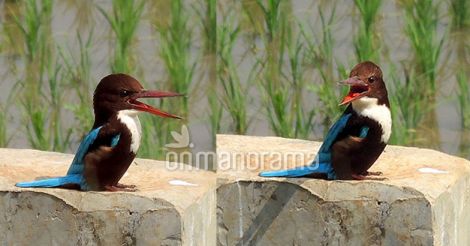 Great Kingfisher
Great Kingfisher
“It is obvious that there are obstructions in their route,” says Greeshma, a researcher at Kerala Forest Research Institute. “Hunting for meat and bursting crackers to shove away birds are the main threat they face. Receding water levels and increase in atmospheric temperature due to climate change constitute the other major risk factors. Unconventionally, birds start flocking in the fields even months before cultivation begins. Spotting desert birds at kole lands point fingers to the receding levels in ground water,” she says.
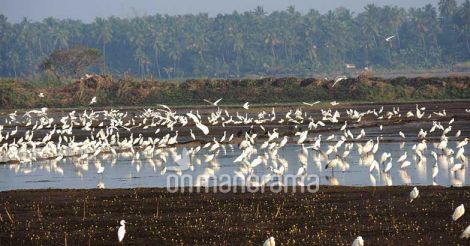
However, timely interventions of volunteer groups have thrown light into the need of conserving the kole ecosystem. The role of Kole Birders, a proactive group of bird watchers at kole lands is definitely worth a mention. A group of 60 independent bird watchers, Kole Birders conduct 'bird-walks' and volunteer frequent bird surveys to keep track of kole birds. Watching birds throughout the year, they come up with credible data regarding bird movement and photographs to substantiate them. Birding in the kole begins in September and ends by the first week of June, says Anilkumar, a birder. “I pack up once the last Prattincole leaves,” he adds.
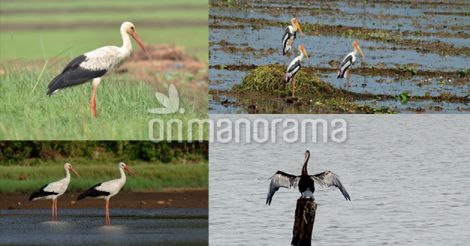
Water bodies of the kole wetlands are all interlinked in nature. The narrow creeks and passages between two water sources form the route of aquatic migrations, which include the journey of fish and other aquatic creatures, and birds follow them. Several kinds of eagles, kites and predator birds come after them. Marsh Harrier is one such eagle species, which turns up seasonally following minor birds. Paragreen Falcon, one of the fastest flying birds, are also seasonal visitors here.
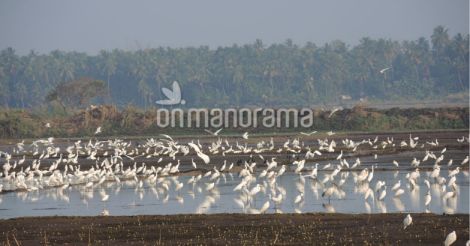
“There has been a considerable decrease in hunting and other obstructive activities in the kole lands recently,” says T. Jayaraj, a senior kole birder. “People started understanding that there is something serious about conserving nature. Increased engagement of bird watchers in the fields also tightened the so-called surveillance that hunters fear being caught on camera every time they come down to shoot.

“Building awareness is the only way to protect kole wetlands and the birds. We do plan a lot of activities but an official awareness program from the part of government could make a difference. When you see an unconventionally large number of rare migratory birds down here, it can well be a hint of disaster, a serious disturbance in their migration route, unevenness in food and water availability or the absence of our native bird species,” says Jayaraj.
This volunteer group leaves a hopeful note in a world that ignores a development outside human society. Much like they say, no development is sustainable unless it includes nature.























